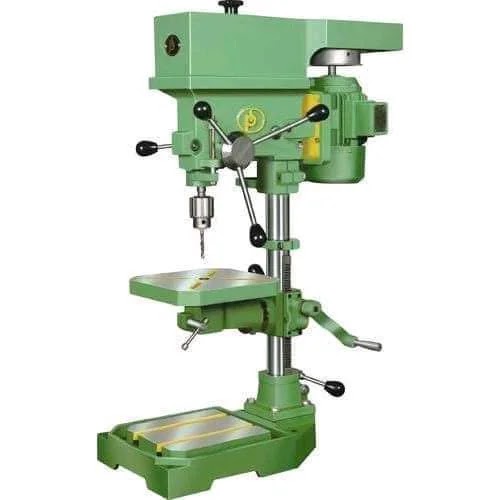**Energy Production**: This refers to the amount of electrical energy generated by a power plant or energy-producing system over a specific period. It is typically measured in kilowatt-hours (kWh), megawatt-hours (MWh), or gigawatt-hours (GWh). Energy production depends on the type of energy source (e.g., solar, wind, coal, nuclear), the efficiency of the power plant, and the operational time.
**Capacity Factor**: The capacity factor is a measure of how effectively a power plant uses its installed capacity. It is defined as the ratio of the actual energy produced over a period to the maximum possible energy that could have been produced if the plant operated at full capacity the entire time. It is usually expressed as a percentage.
The formula for capacity factor is:
\[ \text{Capacity Factor} = \left( \frac{\text{Actual Energy Production}}{\text{Maximum Possible Energy Production}} \right) \times 100 \]
Where:
- **Actual Energy Production** is the total energy generated during the period (in MWh, for example).
- **Maximum Possible Energy Production** is the product of the installed capacity (in MW) and the number of hours in the period.
### Example Calculation
Suppose a wind farm has an installed capacity of 100 MW and it produced 175,200 MWh of electricity over a year.
1. Calculate the maximum possible energy production:
- Number of hours in a year = 365 days/year * 24 hours/day = 8,760 hours/year
- Maximum possible energy production = 100 MW * 8,760 hours = 876,000 MWh
2. Calculate the capacity factor:
- Capacity Factor = (175,200 MWh / 876,000 MWh) * 100 ≈ 20%
Thus, the wind farm operated at 20% of its full capacity over the year.
**Turbine Shaft Power and Torque at Variable Speeds**
In rotating machinery such as turbines, shaft power and torque are key parameters that describe the performance and capabilities of the system. These parameters vary with the speed of the turbine.
### Shaft Power
**Shaft power** (\(P\)) is the mechanical power transmitted through the turbine's shaft. It can be calculated using the following relationship:
\[ P = \tau \cdot \omega \]
Where:
- \(P\) is the shaft power (in watts, W).
- \(\tau\) (tau) is the torque applied to the shaft (in newton-meters, Nm).
- \(\omega\) (omega) is the angular velocity (in radians per second, rad/s).
### Torque
**Torque** (\(\tau\)) is a measure of the rotational force applied to the turbine's shaft. It is related to the power output and the angular velocity by the formula:
\[ \tau = \frac{P}{\omega} \]
Where:
- \(\tau\) is the torque (in Nm).
- \(P\) is the shaft power (in W).
- \(\omega\) is the angular velocity (in rad/s).
### Variable Speeds
At variable speeds, the relationship between shaft power and torque changes:
1. **Constant Power Region**: In some turbines, especially electrical ones, there is a range where the power output remains nearly constant despite changes in speed. In this region, as speed (\(\omega\)) increases, torque (\(\tau\)) must decrease proportionally to maintain constant power. This is described by:
\[ P = \text{constant} \implies \tau \propto \frac{1}{\omega} \]
2. **Constant Torque Region**: In other scenarios, especially at low speeds, torque may remain constant while the power output increases with speed. In this case, as speed increases, power increases linearly:
\[ \tau = \text{constant} \implies P \propto \omega \]
### Practical Example
Consider a wind turbine, where wind speed can vary significantly:
- **Low Wind Speeds**: At low wind speeds, the turbine operates in a constant torque region because the aerodynamic forces on the blades are relatively small. Here, torque is relatively constant, and power increases with the cube of the wind speed.
- **Moderate Wind Speeds**: At moderate wind speeds, the turbine may operate near its optimal power output, where the power is nearly constant. In this region, as the wind speed (and thus rotor speed) increases, torque decreases proportionally.
- **High Wind Speeds**: At high wind speeds, the turbine may reach a cut-out speed where it is shut down to prevent damage. Before this, the power might be regulated to prevent overload, so torque would decrease significantly as speed increases.
### Mathematical Illustration
1. **Constant Power Region**:
- Given: \(P = 1000 \text{ W}\) and \(\omega\) varies.
- At \(\omega = 10 \text{ rad/s}\): \(\tau = \frac{1000 \text{ W}}{10 \text{ rad/s}} = 100 \text{ Nm}\).
- At \(\omega = 20 \text{ rad/s}\): \(\tau = \frac{1000 \text{ W}}{20 \text{ rad/s}} = 50 \text{ Nm}\).
2. **Constant Torque Region**:
- Given: \(\tau = 100 \text{ Nm}\) and \(\omega\) varies.
- At \(\omega = 10 \text{ rad/s}\): \(P = 100 \text{ Nm} \times 10 \text{ rad/s} = 1000 \text{ W}\).
- At \(\omega = 20 \text{ rad/s}\): \(P = 100 \text{ Nm} \times 20 \text{ rad/s} = 2000 \text{ W}\).
Understanding how torque and power interact at variable speeds is crucial for designing and optimizing turbines and other rotating machinery.




.webp)





0 Comments